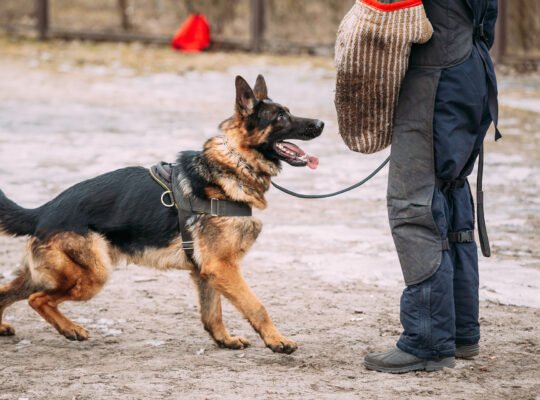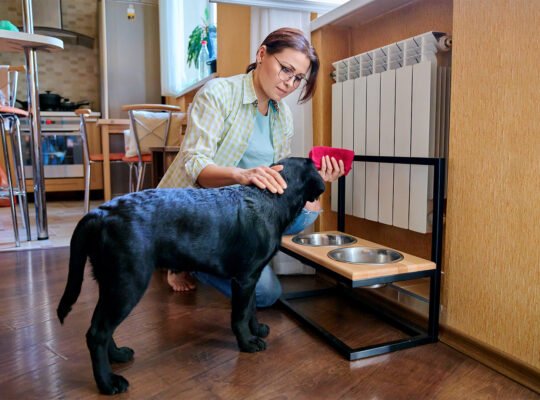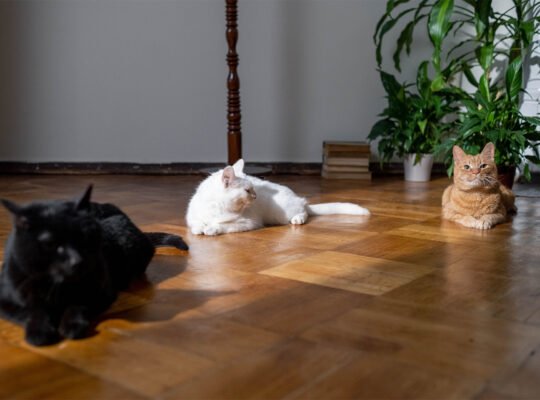Keeping Your Pet Safe: Essential Pet Safety Tips for Every Season
Excerpt: Learn how to safeguard your four-legged companion from potential dangers in any season. This article presents a collection of invaluable pet safety tips, addressing various seasonal hazards. Stay informed to keep your pet safe and sound!
Introduction
As a pet owner, you want nothing but the best for your furry friend. From providing a loving home to ensuring their health and safety, it’s important to be well-informed about potential hazards that can arise throughout the year. Each season presents unique challenges and risks for your pets, but with proper care and attention, you can protect them from harm. In this article, we’ll explore essential pet safety tips for every season, so you can keep your beloved companion safe and sound in any weather.
Spring: Blooming with Safety Measures
Spring brings new life and vibrant colors, but it also presents a few dangers for your pets. Here are some key safety tips to keep in mind:
-
Watch Out for Allergies
Just like humans, pets can suffer from allergies too. Pollen, dust, and other allergens can cause discomfort and respiratory issues for your furry friend. Keep an eye out for signs of allergies, such as excessive scratching, sneezing, or watery eyes. Consult your veterinarian if you suspect your pet is experiencing allergy symptoms.
-
Spring Cleaning Precautions
During your spring cleaning frenzy, be cautious of the cleaning products you use. Some common household cleaners can be toxic to pets if ingested. Keep them securely stored and opt for pet-friendly cleaning alternatives whenever possible. Additionally, ensure that any pesticides or fertilizers used in your garden are pet-safe.
-
Beware of Blooming Plants
While flowers and plants add beauty to your surroundings, some can be toxic to pets if ingested. Azaleas, lilies, tulips, and daffodils are just a few examples of plants that can be harmful to your furry companions. Research pet-friendly plants and keep potentially toxic ones out of reach.
-
Flea and Tick Prevention
Spring is also a prime time for fleas and ticks to become more active. Ensure your pet is up-to-date with their flea and tick prevention treatments. Regularly check for these pesky parasites after outdoor activities and consult your veterinarian for the best preventative measures.
Summer: Fun in the Sun, Safely
Summer is a time for outdoor adventures and soaking up the sun. However, it’s important to take precautions to keep your pets safe from the heat. Consider the following tips:
-
Hydration is Key
Keeping your pet hydrated is crucial during hot summer months. Ensure they have access to fresh water at all times, both indoors and outdoors. Carry a water bottle and portable bowl during walks or outings to provide regular drinks for your furry companion.
-
Never Leave Pets in Parked Cars
It cannot be stressed enough: never leave your pet inside a parked car, even for a few minutes. The temperature inside a car can rise rapidly, leading to heatstroke and even death. If you need to run errands, it’s best to leave your pet at home in a cool and comfortable environment.
-
Protect Those Paws
The pavement and sand can become scorching hot during summer days, which can burn your pet’s paws. Aim for walks during cooler times of the day, such as early morning or late evening. Consider using protective booties or applying pet-friendly paw balm to shield their paws from the heat.
-
Provide Shade and Cooling Options
Create a shaded and cool space for your pet to retreat to during the hottest hours of the day. Set up a well-ventilated area with access to fresh air, provide a fan or air conditioning, and consider using cooling mats or vests designed specifically for pets.
Autumn: Falling into Safety Measures
As the leaves change color and the weather becomes crisp, autumn brings its own set of pet safety considerations. Stay mindful of the following tips to ensure a safe and enjoyable season for your pet:
-
Beware of Toxic Plants
With autumn comes the emergence of mushrooms, some of which can be highly toxic to pets if ingested. Keep a close eye on your surroundings during walks and promptly remove any mushrooms you come across. Familiarize yourself with the types of mushrooms that are dangerous to pets and contact your veterinarian if you suspect your pet has ingested one.
-
Halloween Hazards
While Halloween can be a fun-filled holiday, it also poses potential risks for pets. Chocolate, candy wrappers, and decorations can all be hazardous if consumed by your furry friend. Keep Halloween treats out of your pet’s reach and ensure they’re in a safe and quiet space during trick-or-treating festivities to prevent stress and accidents.
-
Preparing for Colder Weather
As the temperature drops, it’s important to prepare your pet for colder weather. Depending on the breed and individual tolerance, consider providing them with a cozy sweater or jacket during outdoor activities. Also, be mindful of antifreeze spills as it is highly toxic to pets. Clean up spills promptly and store antifreeze securely.
-
Adjusting Exercise Routines
With the days getting shorter, it’s essential to adjust your pet’s exercise routine accordingly. Plan walks and outdoor playtime during daylight hours and ensure they are visible with reflective gear or LED collars when walking in the dark. Additionally, consider interactive indoor games or puzzle toys to keep them mentally stimulated during longer evenings.
Winter: Navigating the Chills with Care
Winter brings colder temperatures and potential hazards that require extra attention to keep your pet safe. Consider these tips to ensure your furry companion stays warm and protected:
-
Indoor Comfort is a Must
During freezing temperatures, it’s best to keep your pets indoors as much as possible. Create a cozy and warm space for them with comfortable bedding away from drafts. If your pet must stay outside for short periods, provide them with a well-insulated shelter and fresh water that won’t freeze.
-
Dress for the Weather
Just like humans, pets can benefit from winter wear to stay warm during outdoor activities. Consider investing in a proper-fitting coat or sweater, especially for short-haired or small breeds. Protecting their paws with booties can also prevent frostbite or irritation from salted roads or sidewalks.
-
Watch Out for Chemicals
Winter brings the use of de-icing agents, such as rock salt or antifreeze. These substances can be harmful if ingested by your pet. After walks, wipe your pet’s paws to remove any residue and prevent them from licking their paws clean. Opt for pet-safe de-icing alternatives and be cautious of spills or leaks.
-
Be Mindful of Winter Hazards
Frozen bodies of water can pose a risk to your pet, as the ice may not be thick enough to support their weight. Keep them away from ponds, lakes, or other bodies of water that might not be completely frozenover. Additionally, be cautious of low temperatures during walks and limit the time spent outdoors in extreme cold. Monitor your pet for signs of discomfort, such as shivering or lifting their paws, and bring them indoors if necessary.

FAQs (Frequently Asked Questions)
Q: Can I use human sunscreen on my pet during summer?
A: No, human sunscreen can be toxic to pets if ingested. Use a pet-specific sunscreen that is safe for their sensitive skin. Consult your veterinarian for recommendations.
Q: How do I know if a plant is toxic to my pet?
A: It’s important to research and familiarize yourself with plants that are toxic to pets. Various online resources provide lists of toxic plants. If you suspect your pet has ingested a toxic plant, contact your veterinarian immediately.
Q: Can I give my pet ice cubes to cool down in summer?
A: While some pets may enjoy ice cubes as a refreshing treat, it’s important to monitor them to prevent choking or dental issues. Alternatively, consider using pet-safe cooling mats or providing fresh water for them to drink.
Q: What should I do if my pet accidentally ingests antifreeze?
A: Antifreeze is highly toxic to pets. If you suspect your pet has ingested antifreeze, contact your veterinarian immediately. Time is critical, as antifreeze poisoning can be life-threatening.
Conclusion: Safeguarding Your Furry Friend
Throughout the year, each season presents its own set of challenges and potential hazards for your beloved pets. By following these essential pet safety tips for every season, you can ensure their well-being and protect them from harm. From allergies to heatstroke, toxic plants to cold weather precautions, staying informed and proactive is key to keeping your furry companion safe and sound.
Remember, always consult your veterinarian for personalized advice and recommendations based on your pet’s specific needs. With the right precautions and care, you can enjoy every season with your furry friend, knowing you’re doing everything possible to keep them safe and happy.
External Links:
ASPCA’s Guide to Pet-Safe Plants
Pet Poison Helpline: Antifreeze Poisoning
Note: The above external links are provided for informational purposes only and do not constitute endorsement or affiliation.
















